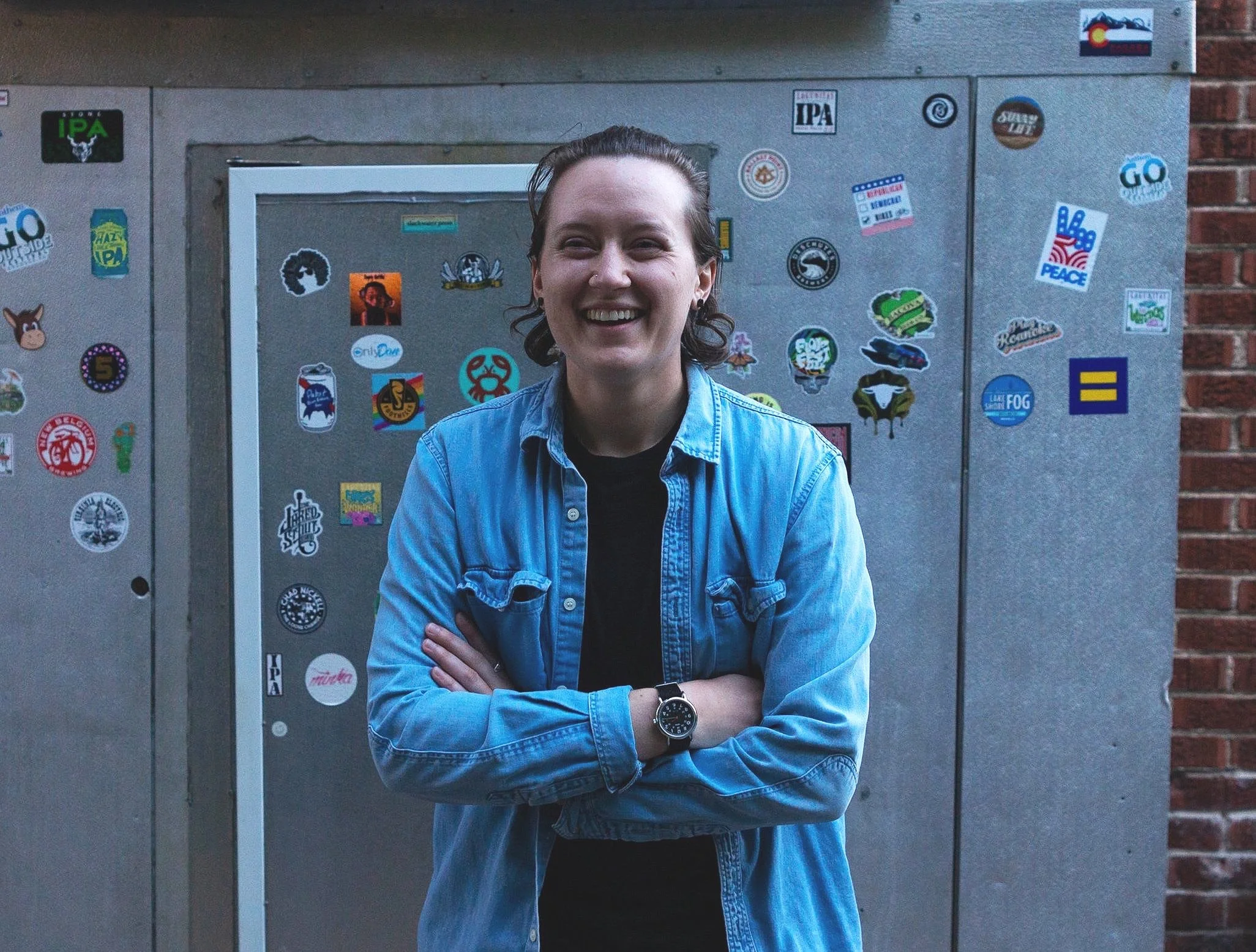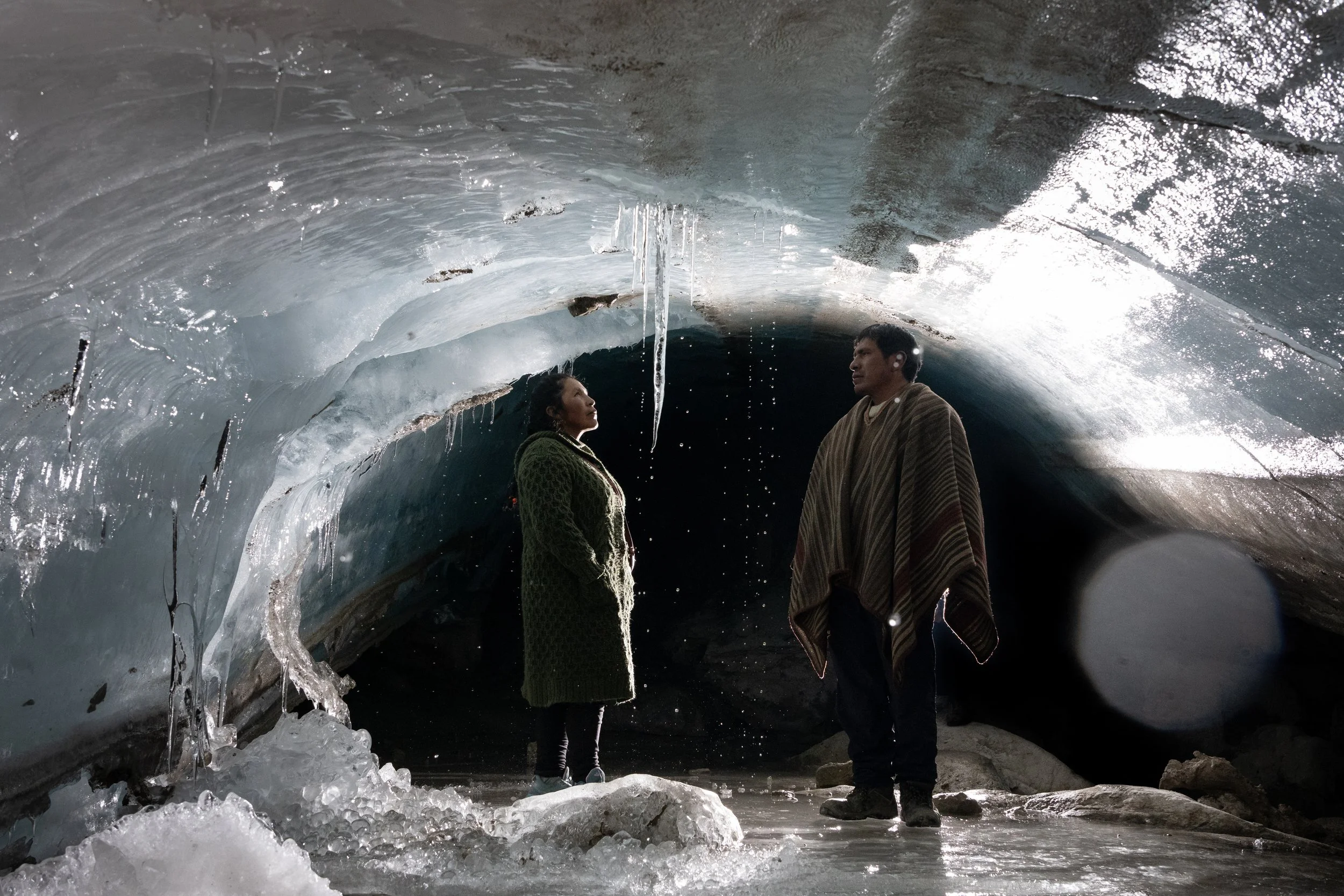Find out what makes Leya Russell More Than a Photographer
PWB photographer and artist, Leya Russell
Photo by Brandie Sunley
Calgary-based photographer Leya Russell has practiced visual storytelling her entire life. Growing up with dyslexia, Russell found comfort in communicating and connecting with her natural surroundings through imagery. As a constant creator, Russell works out of her garage-turned-studio, where she practices drawing, print-making and collage work.
Passionate about the environment, Russell recently travelled to Bangladesh with PWB to work with the Centre for Disability in Development to capture the intersections of climate change and disability. On a flight back home to Canada, Russell was involved in a plane crash in Yangon, Myanmar. “I was incredibly lucky, and once we were able to get the plane doors open, I returned to my seat to save the images from Bangladesh from the wreckage. Unaware of my injuries and fuelled by adrenaline and shock, I grabbed my camera and fled the scene,” wrote Russell. The next day however, she was airlifted to Bangkok, Thailand, with two broken vertebrae, a compressed spine, and serious concussion; an emotional experience that left her unable to walk for a few weeks.
Since then, Russell has been reunited with her family back in Calgary and continues to attend physical therapy for her recovery. She continues to practice her art with overwhelming gratitude, and feels more connected than ever to the issues she explores through her work.
PWB recently had the opportunity to catch up with Russell following her return home.
Photo by Leya Russell on assignment for the Centre for Disability in Development
PWB: What makes you more than a photographer?
LR: … what makes me more than a photographer? What makes me more than someone that just runs, dressed in black with a huge lens and direct flash, is that my photography truly centres around connecting to people. Before a single click of my shutter, I make sure that I meet my subjects face-to-face, introduce myself, shake their hand, and tell them they’re beautiful, in whichever language they feel comfortable. I truly believe in my heart that people look the way they feel. I strive for my images to help tell the story of my subject, for my images to be full of emotion. The way that I am able to gain this trust and access is through openly seeing and accepting them. I meet people on a human level and with the utmost respect and feel very honoured that they trust me to help share their story.
Photo by Leya Russell on assignment for the Centre for Disability in Development
PWB: How has your work as a photographer connected you to your community? to the world?
LR: The ability for photography to connect me to my community and the world is probably my favourite thing about photography. Being a wedding and family photographer, I am so lucky to be welcomed into the heart of homes and families. I’m welcomed into temples, mosques and synagogues, into churches and meadows in the sides of cliffs. I get to meet so many people and see so many different ways in which we can live our lives. Photography has sent me all over the world; into distant rural land and into the homes of people I cannot speak with, but my camera gives me access to their lives. Once I take someone’s picture, it breaks down the barrier of language. So we are communicating on a deep and meaningful level that transcends language and emphasizes acceptance and respect. The camera captures images that speak of the human experience which makes it clear to me that love is universal, and allows me to tell [a] story that can connect to everyone near and far.
Photo by Leya Russell on assignment for the Centre for Disability in Development
PWB: How does your work expand on existing narratives of the environment and society?
LR: My fine art practice draws attention to the intersection between people and the environment. Coming from Alberta, a northern climate, I am acutely aware of climate change as it is drastic towards the poles. This leads me to wonder how are we interacting with our immediate environment and causing these changes. My curiosity has driven me to create several bodies of work on environmental issues, including documenting the environmental impact of the oil sands in Northern Alberta and the impact of the loss of winter ice in the Arctic. …My work ‘All the Kings Men’ included in Black Gold, an Alberta Foundations for the Arts travelling exhibition- was able to reach over 25,000 people across rural Canada and reflected on how we are able to change, despite how concrete a thing or action may seem. Like the finitude of a photograph, my work highlighted that even after you have completed the final print of an image it can still be adapted. I achieved this quiet introspection; the question of what is truly real in the viewer, through surreal mixed-media photographs which I manipulated through a series of washes and resists.
My most recent assignment with PWB in Bangladesh continues to expand on the narrative of our place in and impact on the environment that affects us and our human culture. It was my great honour to work with the Center for Disability in Development, who focuses on disaster preparedness and response. In Bangladesh, I was able to document the first cyclone disaster preparedness drill in Bashkhali. Bangladesh is located on the Bay of Bengal and is one of the world’s largest Deltas, which means that a large amount of their landmass is below sea level. With rising oceans and the risk of cyclones and storm swells, their population is at great risk [, and face] indirect and clear interaction with the destruction of their environment.
I use my camera to document this intersection in hopes that people may begin to ask their own questions when it comes to our ethical obligation to the earth and to future generations.
Photo by Leya Russell on assignment for the Centre for Disability in Development
PWB: What does storytelling mean to you?
LR: To me, visual storytelling with my camera means to step into a scene and then step back from it. To see the light, to understand the meaning of what is happening precisely here and now. To have a connection to your subject, once people understand that you only have acceptance and compassion for them allows them the trusted vulnerability to be able to share their world with me. To be fully in that moment and then compose and wait. To compose your frame fully and concisely as possible; removing any extraneous information and helping to lead the viewers through the many layers and unravelling of the moment captured inside. When an image is able to tell a story it truly helps the viewer connect and emotionally understand the situation, pause and ask their own questions.
Photo by Leya Russell on assignment for the Centre for Disability in Development
You can see Russell’s full portfolio on her website, leyarussell.com.
Russell’s project for the Centre for Disability in Development is also featured in the 13th edition of PWB Magazine. Subscribe by becoming a member today!


















